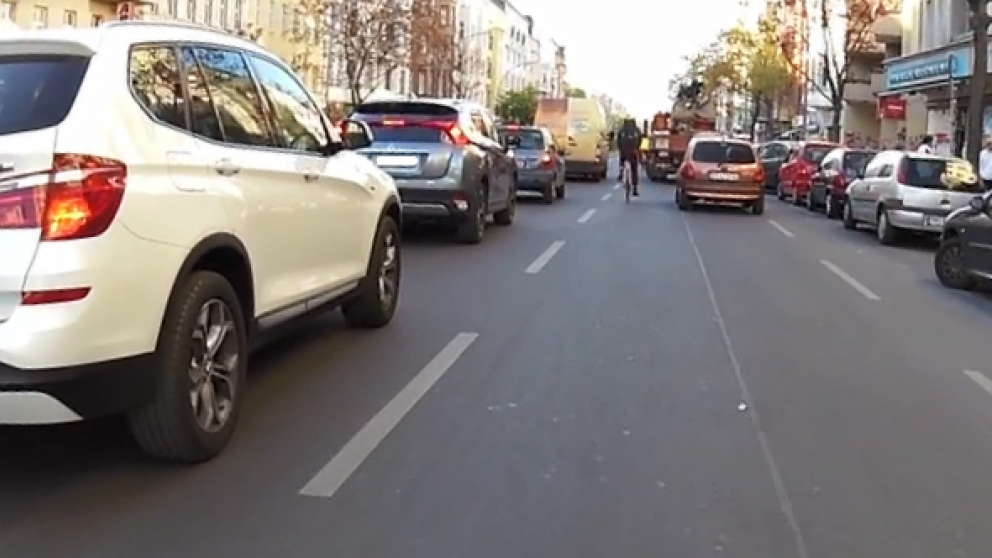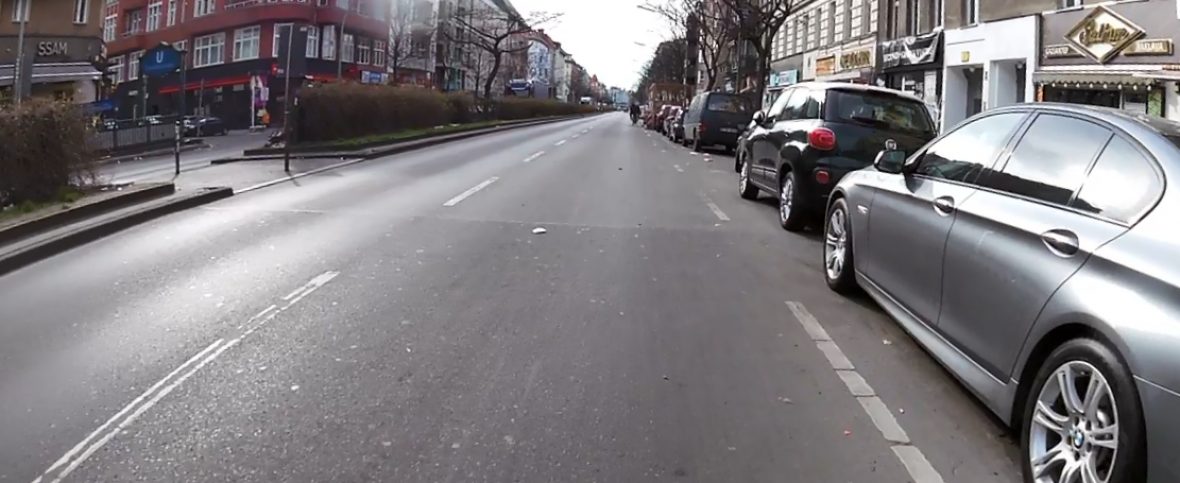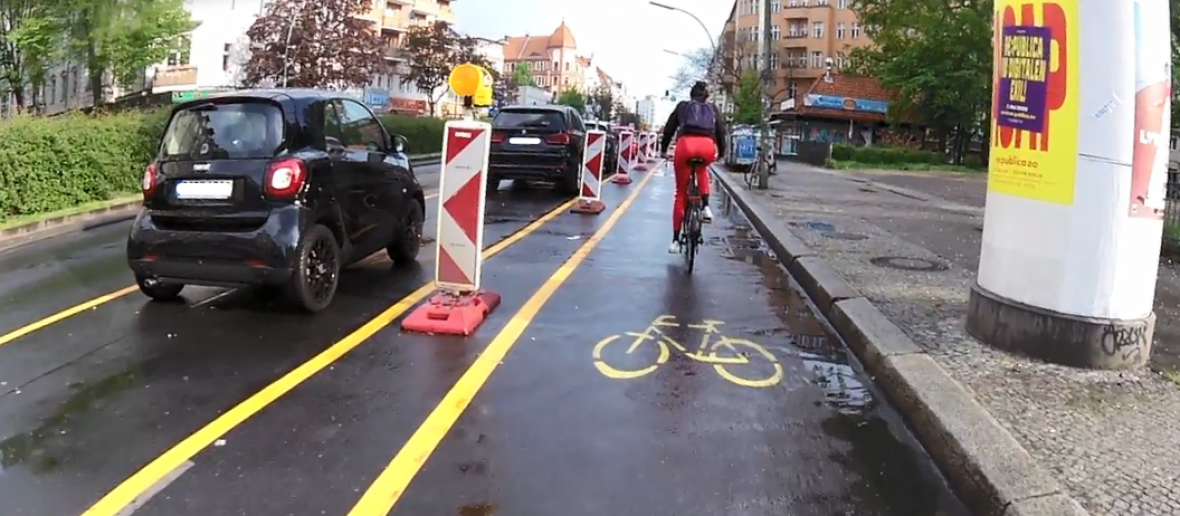Headline:
Cycling through times of change

2020 has been one of the most turbulent years in modern world history. It feels as if a lifetime has passed by already, and yet we are only halfway through the year. By and large, Covid-19 has catalyzed changes around the world, perhaps irrevocably. The effects are being felt everywhere and it feels as if, no matter what we do, we cannot escape the influence of Covid-19 in our lives.
These changes have manifested themselves in diverse ways; some are local, some are global, and some are not yet clear. In Berlin, one unique change that has continued to develop over the past few months is the installation of “Pop-up” bike lanes on busy streets around the city. Citing the pandemic, city officials have been fast-tracking plans for new, protected bike lanes in order to allow citizens to travel safely by bike and avoid overcrowding in public transport. A recent IASS Study shows that these new bike lanes are strongly supported by people who identify primarily as cyclists, pedestrians, or users of public transport, but are disliked by those who identify as car drivers. While these results are unsurprising, they capture Berlin’s quite recent citizen-led shift in transport policy, ultimately culminating in the recent Mobility Law of 2018. That does not mean, however, that these new bike lanes are without criticism.
As the Covid-19 pandemic spread across the world and came to Berlin, the ClimPol project of the IASS was conducting a measurement campaign along the busy street of Kottbusser Damm in Friedrichshain-Kreuzberg. In anticipation of a new, protected bike lane on the street, our project was measuring the air quality to understand how it would change once the bike lane was put in place. As such, our campaign was disrupted by the plethora of public health measures put in place to protect Berlin’s citizens from the pandemic. Large-scale closures of public places and businesses caused a significant dip in movement around Berlin, leading to a measured improvement in air quality during the weeks that these measures were in place. Soon after this, the new bike lane was implemented in pop-up form (some 4 months earlier than initially planned), effectively marking our original research goals as unattainable. While it serves as a stark example of the unpredictability of conducting scientific research, it was also fascinating to see how Covid-19 has rapidly transformed the world from the perspective of a single street in Berlin.
What follows are my musings about the cycling conditions before, during, and after the Covid-19 pandemic.
A dangerous ride: Kottbusser Damm before the bike lane
From Hermannplatz to Kottbusser Brücke, there is no semblance of a bike lane. When entering the street from either side, cyclists are forced to leave the designated bike lanes and merge with two lanes of car traffic. For anybody cycling on this street for the first time: welcome to a cyclist’s nightmare.
As you proceed along the street, you’re faced with a variety of hazards that you must constantly be aware of. While traffic flows relatively well with two lanes available, one is almost always blocked at various points by large trucks making deliveries. You have no choice but to enter the remaining lane with all other cars and navigate the thin, unprotected space between the truck on your right and the cars on your left. Even the most hardened of Berlin cyclists might find this uncomfortable, but for all others it is downright dangerous.
While one has fair warning of a truck parked in their way, it is often impossible to prepare for the aggressive and unpredictable decisions of car-drivers. It must be said that not all car-drivers are bad and many take great care to be aware of cyclists and pedestrians. There are, however, bad actors that spoil the experience for everyone. As a cyclist on Kottbusser Damm, you have no choice but to assume that all cars are being driven by someone unaware of, uncaring for, or downright hostile towards cyclists.
That skepticism allows you to react quickly to:
- sudden lane changes;
- cars turning right without looking for oncoming cyclists;
- sudden stops to park in the second lane or a free parking space;
- rapid acceleration through an orange/red light;
- opening of car doors; and so on and so forth. Without constant, heightened awareness of all cars around you, the street becomes a hazard-strewn obstacle course.
Add to this the often chaotic vectors of other cyclists and pedestrians, as well as poor air quality and the violent cacophony of transportation and the situation becomes simply hellish.

Calm befalls Berlin: the arrival of Covid-19
For months we all watched as the coronavirus spread globally, eventually arriving in Germany. At first there were areas of major outbreaks that were to be contained and now suddenly, it was here in our backyard. While the threat was substantial, conditions for cycling in Berlin had never been better. The first week of corona measures was a respite from the horrors of cycling in many parts of the city. Car traffic was down; trucks were delivering less often; even the air and noise pollution had improved substantially. If you left the house early enough to cycle around (as I had been for our measurement campaign), there was hardly a soul to see on the streets. Kottbusser Damm was much the same; with all businesses except supermarkets closed, the daily hustle and bustle reduced to a trickle of its former self. For me, it couldn’t have been better. With fewer cars and trucks on the street, I was able to comfortably cycle up and down the street without constant fear of an accident. The air finally felt fresher and the city quieter. It’s rare that you see a busy city frozen in place; rarer still that you see it from the perspective of the streets. Cycling on this street and around Berlin under lockdown was nothing short of bliss.
All good things, however, must come to an end.
Chaos returns, but improved?
Only about 2 weeks into the Covid-19 measures, it seemed that people on and around Kottbusser Damm started to give up their commitment to the lockdown. The streets filled up with cars, trucks, and pedestrians again. It seemed that the challenging situation for cyclists would return, but about a month after the adoption of the measures, the district government of Friedrichshain-Kreuzberg started implementing pop-up bike lanes in response to the coronavirus crisis. Now there’s one on Kottbusser Damm too! And boy does it make a difference (well, for the cyclists at least). Instead of weaving in and out of cars, trucks, and other cyclists, now one can cycle down the street quite fast, without having to be hyper-aware of all the cars on the road. Better still, the lane is protected. That way, cars can’t simply ignore the new lines without blatantly driving through the (temporary) bollards put in place. It’s a massive difference whose importance to the safety of cyclists cannot be overstated.

When such changes to the street layout occur, there are always winners and losers. The clear winners in this case are the cyclists, who can now cycle safely along the street. Without a doubt, car-drivers are the losers with these pop-up lanes, and they know it. With only one lane dedicated to through-traffic and the second lane being divided into delivery zones, taxi stands, and parking spots, the freedom of car-drivers has been overtly restricted. More traffic – even a perceived increase – can also mean more frustration. At times this translates into raw aggression, especially towards cyclists who now have substantially more space and freedom of movement. The chaos on the street is still there; its composition has simply changed.
For cyclists, the removal of old hazards has led to new ones – although far less deadly. Far more often than previously, cyclists are coming into conflict with pedestrians. The bike lane has simultaneously become an easier opportunity to cross the street as well as a moat separating pedestrians and workers from parked cars and trucks. The main obstacle is no longer unwary car-drivers, but rather pedestrians crossing the bike lane. The same skepticism needed to observe cars before the pop-up bike lane was established must now be applied to keep a close eye on the decision-making of all pedestrians. At intersections, cars turning right still need to be paid attention to, as they all too often turn without so much as a glance for potential oncoming cyclists. There are even those who blatantly park in the bike lane, rebelling against any perceived restriction of freedom.
Despite the reconfiguration of chaos, cycling has become much safer on Kottbusser Damm. Berlin’s response to the Covid-19 crisis has unexpectedly yielded better cycling conditions on this particular street, as it has across the city with the continued adoption of protected bike lanes. They aren’t perfect, but they are a step in the right direction towards fairer and safer apportionment of street space for cyclists.
Onwards with the Verkehrswende, Berlin!

Comments
I also publish articles regarding cycling on https://bikereviewshub.com/ and there was a time before COVID when people started saying that it's end of cycling but CORONA changed everything. Now a lot of people looking for bicycles even some bike stores are out of stock. I think there will be a huge boost up to cycling industry after COVID.
Eine nuancierte Darstellung eines absolut zentralen aber zu oft vernachlässigten Aspekts der öffentlichen Planung und des Alltagslebens! Ob eine Stadt darauf ausgerichtet wurde einen sicherer Fahrradverkehr möglich zu machen oder nicht, ist aus meiner Sicht ein zentraler Bestandteil der Lebensqualität. Wer schonmal niederländische oder dänische Städte mit der Deutschen Hauptstadt verglichen hat, weiss genau was ich meine.
Ich hoffe sehr, dass Berlin sich die Chance nicht entgehen lässt und die Provisorien nach und nach in permanente Einrichtungen umsetzt und auch bei der Kontrolle genügend streng vorgeht, dass der Radverkehr und die damit verbundene Lebensqualität wirklich Teil dieser interessanten Stadt werden kann.
Eine nuancierte Darstellung eines absolut zentralen aber zu oft vernachlässigten Aspekts der öffentlichen Planung und des Alltagslebens! Ob eine Stadt darauf ausgerichtet wurde einen sicherer Fahrradverkehr möglich zu machen oder nicht, ist aus meiner Sicht ein zentraler Bestandteil der Lebensqualität. Wer schonmal niederländische oder dänische Städte mit der Deutschen Hauptstadt verglichen hat, weiss genau was ich meine.
Ich hoffe sehr, dass Berlin sich die Chance nicht entgehen lässt und die Provisorien nach und nach in permanente Einrichtungen umsetzt und auch bei der Kontrolle genügend streng vorgeht, dass der Radverkehr und die damit verbundene Lebensqualität wirklich Teil dieser interessanten Stadt werden kann. Ich war anfangs sehr skeptisch, aber die Umsetzung ist oft wirklich gut gelöst.
Add new comment